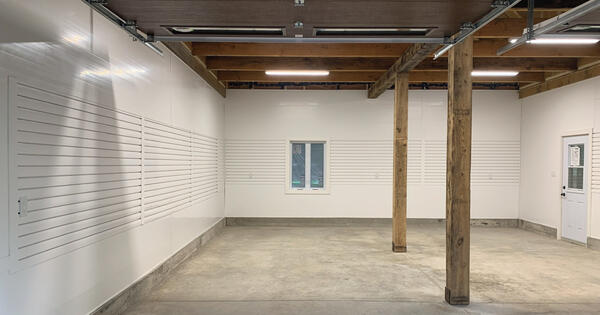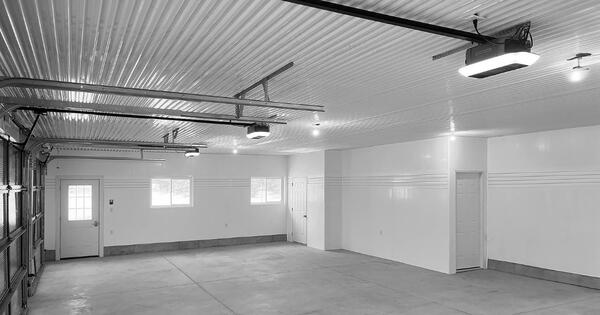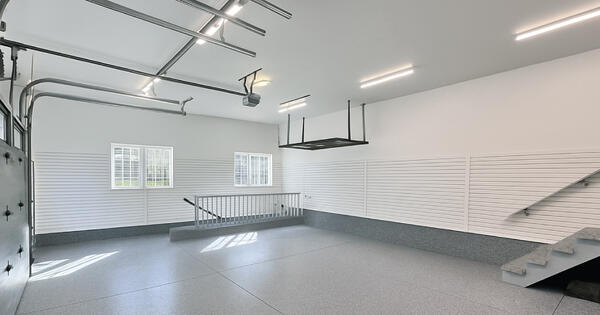If you’re a new home renovation DIYer, one of the top to-dos on your list is likely to expand your power tool collection. After all, it’s difficult to complete a project when you don’t have the proper tools on hand. An electric saw is a must have — especially when it’s time to cut wood to size — and there are two popular handheld saws you’ll likely come across in your search: a jig saw and a circular saw.
But what’s the difference between a jig saw and circular saw, and which is better for your project? We explain it all below.

What is a Jigsaw?
A jig saw is a lightweight, handheld power saw that's equipped with a reciprocating blade that can be used to cut through wood, plywood, particleboard, ceramic, plastic, and metal. A jig saw can be used for a variety of cuts, including straight cuts, curved cuts, crosscuts, plunge cuts, ripping, and beveling.
Features to Consider When Buying a Jigsaw
Thanks to its versatility, a jig saw is the second most common power tool a DIYer will add to their tool set following a drill. When looking through your options, consider these features:
Power Rating
Like most power tools, a jig saw is available in corded and cordless versions. The motor power rating of a corded jig saw is listed in amperes (A), while the rating of a cordless saws is listed in volts (V). For both types, a higher power rating means faster and cleaner cuts. A corded saw’s power rating will range from 3.2A to 7A, but we recommend choosing one between 6A and 7A. A cordless saw’s power rating will range between 12V and 36V, and we recommend choosing one with over 18V.
Variable Speed
Variable speed allows you to determine the speed of the blade through the amount of pressure you place on the trigger. When you press the trigger, the blade will move faster. When you release the trigger, the blade will slow or stop. If you’re planning to cut metal or cut curves in wood — both of which require a slower cut – variable speed is important.
-
Orbital Action
Some jig saw models come equipped with orbital action, which pushes the blade forward and backwards in addition to moving it up and down. It’s a more aggressive motion that cuts faster and is smoother to use than a traditional jig saw. If you’re looking for a jig saw to cut wood or plastic, orbital action is a must have feature.
LED Lamp
Buying a jig saw with a built-in LED lamp is critical if you plan on working in dimly lit spaces of your home. The LED lamp shines a bright light around your work area to help you avoid cutting errors and accidents.
Laser Guide
A jig saw with a laser guide will cast a thin laser line from the front of the saw to help you maintain a straight cutting line.
When to Use a Jigsaw for Your Project
Jigsaws can be used for general DIY and woodworking projects that require odd shapes to be cut like circles or waves. It’s also the perfect saw for cutting out neat, precise holes for light switches, power outlets, and other apertures.
What is a Circular Saw?
A circular saw has a has a toothed disc that spins in a circular motion around a mandrel. As it spins, the disc acts as a cutting blade that can cut through wood, plywood, metal, ceramic, plastic, and masonry. Despite the name, circular saws aren’t designed to cut circles or irregular shapes — they’re meant to cut straight lines. A circular saw can make crosscuts, rip cuts, and bevel cuts.
There are two types of handheld circular saws you can choose from:

Sidewinder
Sidewinders are the most recognizable style of circular saw and it’s most favored by homeowners — it’s lighter, cheaper, and easier to handle than a worm drive saw. A sidewinder saw handle is set above the blade on the right side of the saw handle. The blade of a sidewinder is also driven directly by the motor spindle and spins faster than the blade on a worm drive saw. This type of circular saw is best suited for projects involving wood, wood products, sheet metal, and cement board

Worm Drive
A worm drive saw is longer than a sidewinder its handle is positioned behind the blade. A worm drive saw’s motor is mounted parallel to its blade and it requires a gear system to convert motor action into blade spin, which makes it heavier than the alternative. Since worm drives have more torque than sidewinders, they’re best suited for heavy duty work and are often preferred by construction pros.
Features of a Circular Saw
Whether you’re buying a sidewinder or worm drive circular saw, make sure to consider these important features beforehand:
Power Rating
Just like with jig saws, the power rating of a corded circular saw is listed in amps while the power rating of a cordless model is listed in volts. Corded saws have a power rating between 10A and 15A, while cordless saws will have a power rating between 14V and 36V. For most home users, 13A corded saws and 18V cordless saws offer the best power-to-weight ratio.
Blade Size or Blade Capacity
Circular saws are categorized by the diameter of the blade they use, with the most common blade size being 7 ¼". Saws with a 7 ¼" blade can cut through materials that are 3” thick and offer the widest variety of blade choices for cutting materials other than wood. For general, at-home use, circular saws can also have a 6 ½" or 8 ¼" blade capacity.
-
Electric Brake
An electric brake is a safety feature on some circular saws that reverses the flow of electricity passing through the tool’s motor to quickly stop the blade from rotating. Saws with this feature can stop spinning their blades in under 2 seconds.
-
Laser Guide.
Since a circular saw is designed to cut straight lines, a laser guide is an especially helpful feature to have to ensure every cut you make is perfect.
When to Use a Circular Saw for Your Project
In terms of home renovation projects, you’ll mainly need a circular saw when you need to cut lumber or large sheets of drywall and plywood down to size. Since the blade is so large and can only cut a straight line, it can’t be used for projects needing a finer touch like a jig saw can.
While you may be considering buying just one saw for now, you’ll likely need to consider adding a jig saw and a circular saw to your tool kit at some point. However, the saw you buy first entirely depends on what you need to complete your next project. Happy DIYing!






